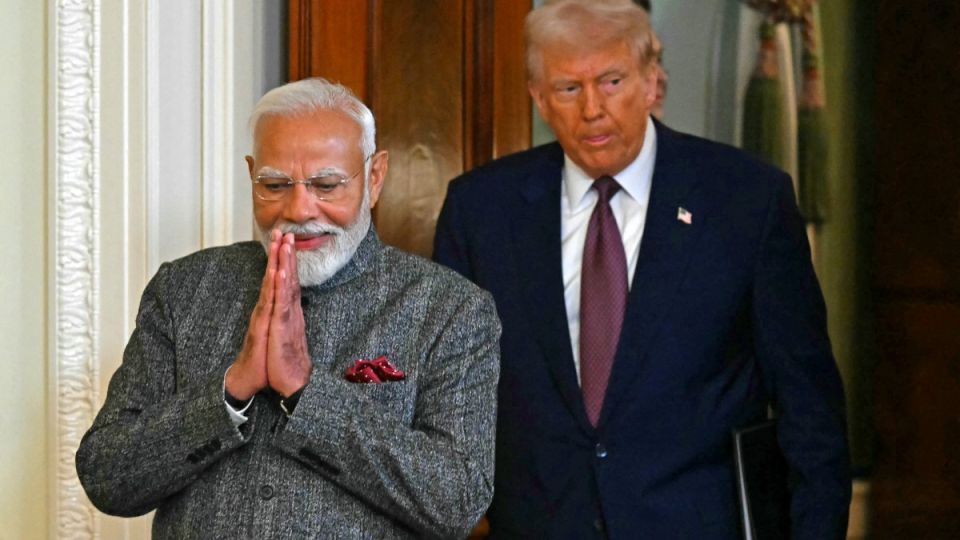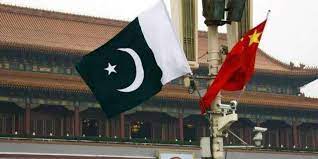How Trump Took Credit — And India Pushes Back — on the May 2025 Ceasefire
By: Javid Amin | Srinagar | 19 June 2025
“I stopped the war…” Trump’s Bold Claim
After a phone call with Prime Minister Narendra Modi, former U.S. President Donald Trump caught global attention once more with his assertion: he had brokered the ceasefire between India and Pakistan. Standing before the press ahead of a White House meeting with Pakistan Army Chief General Asim Munir, Trump declared:
“I stopped the war between Pakistan and India… I spoke to [Modi] last night. We’re going to make a trade deal with Modi.”
He credited both Modi and Munir as “extremely influential” figures in achieving this fragile peace—and lamented that his role went largely unreported:
“They were going at it, and they’re both nuclear countries. I got it stopped. I don’t think I had one story written about it… but the people know.”
Trump also painted the ceasefire as a result of his diplomatic pressure and threat of trade consequences.
India’s Firm Refusal: We Did It Ourselves
No Third‑Party Mediation
India’s Government swiftly delivered a forceful rebuttal. Foreign Secretary Vikram Misri clarified that the ceasefire—or more accurately, the suspension of hostilities—occurred through direct DGMO‑to‑DGMO communication between India and Pakistan on May 10, 2025, initiated at Islamabad’s request.
Misri stressed:
-
India has never accepted mediation, will not now, and will not ever.
-
No discussions ever took place around a U.S.-India trade deal explaining the ceasefire.
-
The U.S. role was limited to routine information exchange and nowhere near mediation.
Modi’s Direct Clarification to Trump
On June 18, during their first direct call since the G7 summit, PM Modi reaffirmed India’s unambiguous stance:
-
He clearly told Trump that no U.S. mediation or trade leverage played any role in halting hostilities.
-
He emphasized that settling disputes bilaterally—especially between nuclear powers—was India’s principled, non-negotiable policy .
-
He reiterated that talks culminating in the stand-down were strictly military hotline conversations, requested by Pakistan.
May 2025 Hostilities: A Rapid Escalation
Pahalgam Attack — Catalyst of Crisis
On April 22, 2025, terrorists struck a tourist area in Pahalgam, killing 26, mostly tourists. India blamed Pakistan-backed militant groups—Al Qaeda affiliates—and swiftly responded with missile and airstrikes targeting camps within Pakistan and Pakistan‑Occupied Kashmir.
Operation Sindoor Unleashed
Between May 7–10, India launched Operation Sindoor, a calibrated military campaign signifying:
-
Missile and drone strikes on militant camps and select Pakistani military bases.
-
India’s defense systems (likely including S‑400 batteries) intercepted Pakistani air and drone incursions.
-
India maintained that its actions were measured and proportional.
Ceasefire Triggered by Pakistan
On the night of May 9–10, Pakistan’s DGMO reportedly contacted India’s counterpart via a hotline to request a pause in hostilities—a request India accepted. The ceasefire took effect around May 10.
Despite this, isolated incidents like artillery fire and drone activity briefly disrupted calm, but the truce largely held .
Trump’s Narrative: Mediation or Misunderstanding?
Trump’s Diplomatic Tactic
Trump framed his intervention as decisive: he said he raised the specter of halting U.S. trade with both countries unless they ceased fire, calling it a “shame” that nearly a full-scale war erupted .
India’s Rebuttal
Indian officials were irate. They insisted:
-
No trade leverage was ever discussed in official channels with the U.S.
-
Allowing Trump’s version to go unchallenged risked undermining India’s sovereignty .
-
New Delhi discouraged foreign leaders from positioning themselves as mediators, especially on Kashmir.
Pakistan’s Perspective
Interestingly, Pakistan’s PM Shehbaz Sharif thanked Trump for his mediation role. Pakistani officials also attributed some credit to regional players like Saudi Arabia, Turkey, the UK, and China.
Geopolitical Ripples & Strategic Stakes
India’s Sovereignty & Indo-U.S. Relations
India’s rebuff underlines a core tenet: its disputes with Pakistan are bilateral matters, to be resolved within sovereign channels. The incident also signals a need for U.S. leaders to respect India’s foreign policy autonomy .
Maintaining strong U.S.–India ties—especially around defense, trade negotiations, and the Indo-Pacific strategy—requires that America tread carefully and acknowledge Indian red lines.
Pakistan’s Diplomatic Gain
Pakistan welcomed Trump’s mediation claims, using them to project that Washington considered Islamabad a serious interlocutor. While this gave Pakistan some diplomatic soft power, it also fueled Indian suspicion of possible back-channel influence.
Nuclear Brinkmanship & Regional Stability
This stand-off reaffirmed the fragile nuclear balance in South Asia:
-
Both nations reaffirmed a posture of measured escalation, avoiding overt nuclear signaling .
-
Analysts acknowledge that nuclear deterrence helped prevent escalation, but such crises remain alarmingly close to the edge.
Global powers openly warned:
-
The G7 urged de-escalation and direct dialogue between the nations.
-
The U.S. and other Western allies offered intelligence support and communications facilitation to prevent renewed hostilities.
Timeline of Key Events
| Date | Event |
|---|---|
| April 22, 2025 | Terror attack in Pahalgam kills 26 people |
| May 6–7 | India launches Operation Sindoor—air and missile strikes |
| May 7–10 | Pakistan retaliates with drones and intercepted assaults |
| May 9–10 | DGMO hotline call; Pakistan requests ceasefire |
| May 10, 2025 | Ceasefire begins; hostilities largely halted |
| May 12–13 | Trump claims US brokered peace and used trade leverage |
| May 20 | Vikram Misri testifies in Indian parliament: no mediation by US |
| June 16–18 | Modi-Trump call on sidelines of G7; India reaffirms no third-party role |
What This Means for International Affairs
• Sovereignty Matters
India’s firm line extends beyond rhetoric. It signals that regional disputes involving nuclear states are sacrosanct and cannot be shaped by external commercial or diplomatic carrots and sticks.
• U.S. Influence: Tug-of-War
Trump’s assertions serve both as bold diplomacy and blunt messaging—to the international media and domestic base. But for U.S.–India relations, nuanced respect for India’s diplomatic posture matters more than headline-grabbing claims.
• Diplomatic Norms Under Stress
This episode spotlights how global leaders’ public statements—especially on high-stakes crises—shape realities. India’s vocal counter underscores the importance of accurate narratives in maintaining trust.
• Future of Conflict Resolution in South Asia
There’s growing evidence that direct military-to-military hotlines and intense bilateral communication may be essential in managing crises. Any external role will likely be limited to back-channel facilitation at most.
The Expert Takeaway
-
Ceasefire: Bilateral & Military-Driven
The de-escalation came via DGMO communications, not diplomacy or mediation. -
India’s Sovereign Policy Remains Firm
No third-party interventions, commercial assessments, or external trade incentives influence its decisions. -
Trump’s Role Was Symbolic at Best
The U.S. may have offered a listening ear or nudged both sides but did not broker or dictate any agreement. -
Geopolitical Ripples Are Real
This incident reverberates through Indo-U.S. relations, Pakistan’s strategic posture, and global governance norms.
Final Word
Despite bold public claims, the May 2025 ceasefire was an India–Pakistan affair—born of military necessity and bilateral channels. India’s vocal correction of the record is not only a sovereignty assertion but a reminder: in global affairs, facts—not flare—must guide dialogue.



